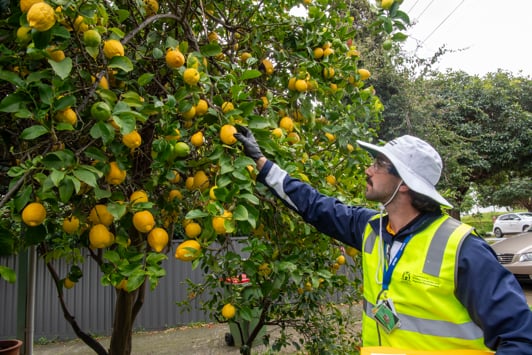Effective biosecurity management has played a critical role in protecting Western Australia (WA), ensuring it remains free of the world’s most invasive pests and diseases.
Biosecurity incursions have the capacity to increase costs and disrupt export and domestic trade of agriculture, forest products, aquaculture and commercial fishing as well as affecting our unique environment, biodiversity and social amenity.
WA’s geographic isolation provides strong protection from the impact of weeds, pests and diseases compared to other jurisdictions and countries. This means we have great market access for our exports and can enjoy our lifestyle without the use of many chemicals or the loss of our native environments and eco systems.
However, protecting WA requires ongoing efforts from everyone, with climate change and continuing increases in the frequency and volume of people and goods entering the state, the challenge of maintaining relative freedom from pests and diseases is escalating.
Biosecurity approach
In WA and across Australia, the invasion curve is used to manage biosecurity. Resources spent on preventing pests and diseases entering the state, or eradicating them before they spread provides a greater return on investment to containment and management of established pests and diseases.
This video by the Biosecurity Council of WA provides an explanation of the invasion curve
Biosecurity is a shared responsibility
Managing pests, weeds and diseases is complex and requires the cooperation of many stakeholders. Land managers, government agencies, industry and the community are all responsible for biosecurity in WA. A collaborative approach between stakeholders will help provide effective pest and disease management to be benefit of everyone.
Everyone in the community can support biosecurity by reporting of biosecurity issues.
Landholders must also ensure appropriate management of pests and diseases on their land.
Not-for-profit, research and community organisations also play an important role through funding (such as via Recognised Biosecurity Groups), voluntary donations of time, money and expertise, the delivery of biosecurity-related research and on-ground programs, as well as fundraising, communications and awareness-raising activities.
Good biosecurity provides financial benefits to industry, such as increased productivity and access to markets. Industry contributes to biosecurity-related activities through:
- Compulsory levies e.g. rural Research and Development corporations.
- Subscriptions e.g. Plant Health Australia and Animal Health Australia.
- Voluntary contributions e.g. WA’s Industry Funding Schemes.
Industry also undertakes activities to:
- ensure compliance with legislation and protocols,
- engage with government on biosecurity issues,
- raise awareness of biosecurity within industry and the community, and
- and general surveillance, management and eradication activities.
Government has a broad leadership role as communicators, educators, facilitators, coordinators, assessors and protectors. Government activities are directed to:
- Prevention and early eradication, as this provides the best return on investment of public funds.
- Supporting industry and the community in eradication and control efforts.
- Developing and delivering robust legislation, policies, systems and processes to support the State’s biosecurity system.
- Providing coordination and leadership in undertaking biosecurity-related emergency response, including the rapid mobilisation of resources.

